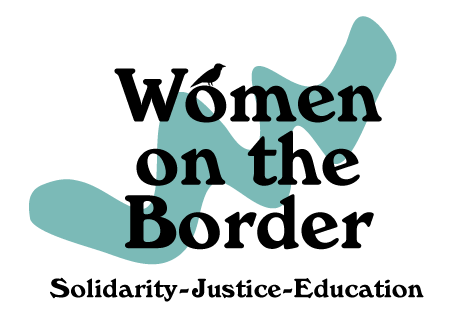Where the Borders of Race, Sex, Gender, Class, Age and Sexuality Meet
by Elvia R. Arriola (2000)
The problems at the U.S.-Mexico border that have expanded under NAFTA can be understood by looking closely at the maquiladoras for their impact on women’s lives. Many other perspectives, such as economic class, or racial attitudes could also be used as the starting point of analysis. Within this work of meeting maquiladora workers and sharing their stories we will be using a gendered lens. This is a critical view of law and society that operates on the assumption that the ways in which a culture or society views the male and female sexes, or explains how and why they are different from each other, is a useful way for explaining just about anything in life or history. To use gender is just a starting point of analysis. It is not exclusive of other important factors, like race, or economics, or ideology, or culture. It is a totally inclusive perspective. The gendered lens also assumes that how those differences are viewed affects in turn how a society or culture distributes power and resources. In a gendered and patriarchal world or culture this distribution is usually unequal. In that unequal distribution, women’s differences from men are often used to justify lower pay, second-class citizenship, objectification of women’s bodies, sexualized harassment and abuse of girls and women, etc. In essence it is a devaluing of the female in relation to male, or of the feminine in relation to the masculine, women to men, girls to boys, etc.
A gendered lens that is viewed holistically, that is with
sensitivity to factors such as race, class, age, sexuality and culture can
benefit greatly from the use of narratives, drawn from the experiences of women
who work or have worked in the maquila industry. The use of gender at the
Mexican border, for example, allows the researcher to inquire, what
role does gender play in explaining any alleged forms of oppression in the
maquiladoras? Why, for example is it a matter of recorded history and
contemporary fact that women have been so heavily represented as “ideal
workers” in the maquiladoras? How does the working women’s gender,
and the Mexican or Anglo attitudes about their class, their sex, their gender
role expectations or their race affect their treatment in the factories?
How does gender intersect with race, class, sexuality, age, and culture
to explain the paltry wages that most maquiladora workers are paid? Are
there specific ways in which a female maquiladora workers is treated that one
would never expect of a male maquiladora worker? What expectations do
factory owners or supervisors have of working women in the maquiladoras that
they do not have of men, and why?
To use a gendered lens in a way that facilitates analysis of other factors such
as race, class, sex, age, citizenship and/or culture is engagement of social
justice theory with critical practice (i.e. “praxis”).
Here are some specific examples of working women’s experiences that
illustrate the ways in which gender at the border meets class, race, age,
sexuality and culture:
A. Gender at work with Mexican
patriarchy – The Mexican woman’s gender role is one where she
is traditionally viewed as dependent on men and one who has little experience
in the working world, and thus with making demands for better pay, or better
working conditions. Many Mexican working women interviewed
internalize these attitudes, speaking of factory owners preferring women
“because men created more problems for them.” Meanwhile plant
managers believe them to have special qualities as workers stating, for
example, that “females are much less tolerant of mistakes, poor quality,
whatever.”
B. Gender at work with sexist
ageism – Factory owners prefer to hire young Mexican women in the
factories because they are easier to manipulate and exploit. Job security
is equated with allowing herself to become the object of sexualized attention
and with invasions of her privacy. The “Miss Maquiladora
pageant” for example, encourages women to curry favor from the bosses and
supervisors with sexualized and stereotyped conduct for “ladies.” Not
surprisingly, such behavior is viewed as the anti-thesis of an angry and frustrated
worker who seeks to unionize her co-workers and demand better pay, a healthier
and safer workspace or better employment benefits.
C.
Gender and pregnancy discrimination – One extreme
example of gender differences explains a particular form of abuse by maquiladora
owners in the practice of mandatory pregnancy testing for new and current
employees. The irony of the pregnancy tests, which often include not only
“surprise” urine testing but also examination of menstrual pads to
prove that a young workers isn’t pregnant, is that to this day, the industry
seeks out young women as workers because of their “natural ability”
to engage in delicate, fast, repetitive and monotonous work. At the same
time a young woman is more likely to show interest in dating, getting married
and getting pregnant to have a family. Pregnancy testing, in its
various abusive and invasive forms in many maquiladoras unfairly singles out
women for their very gender identity as women.
